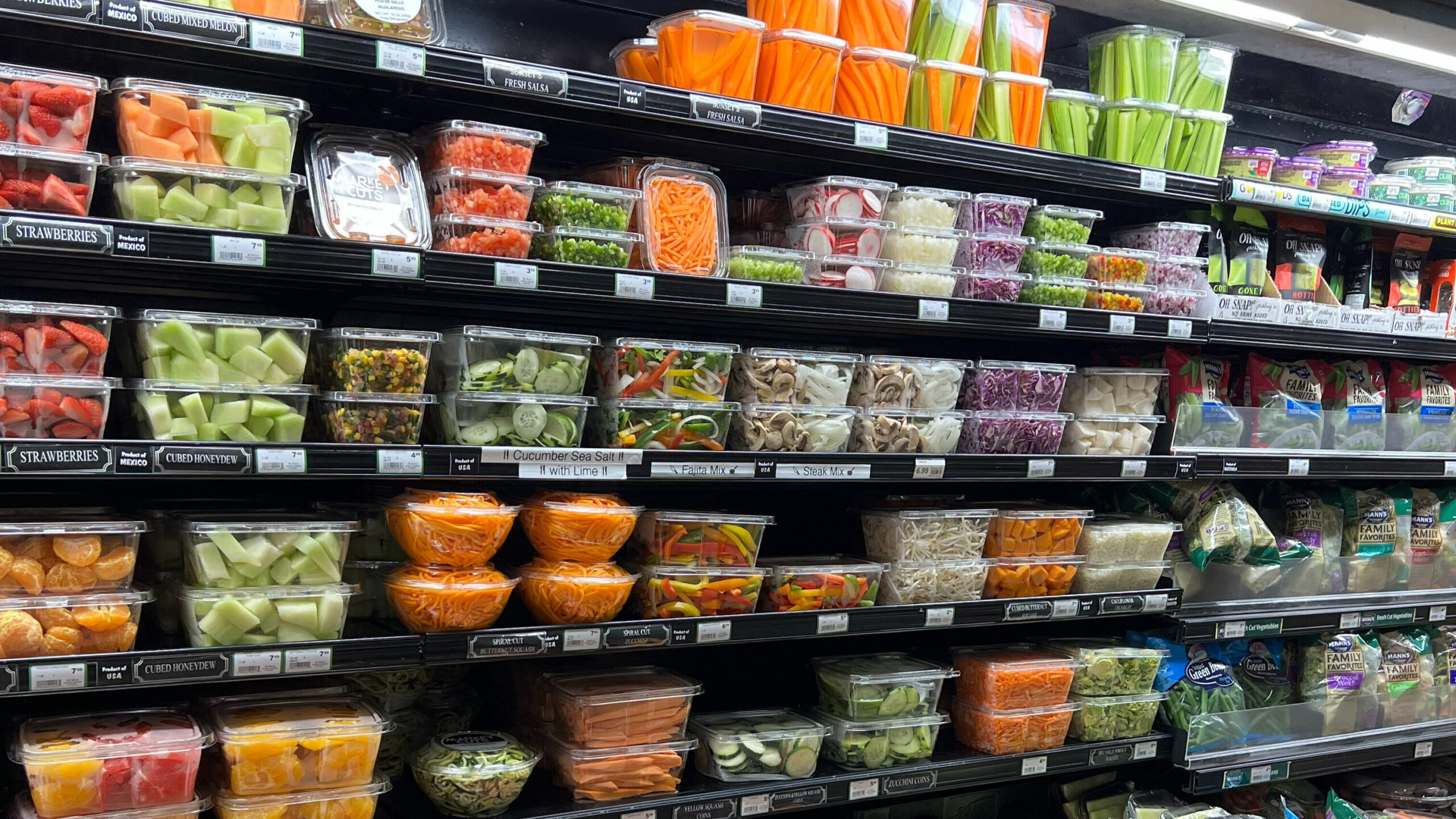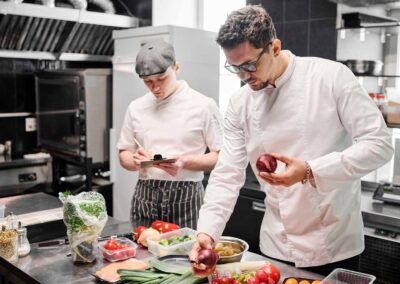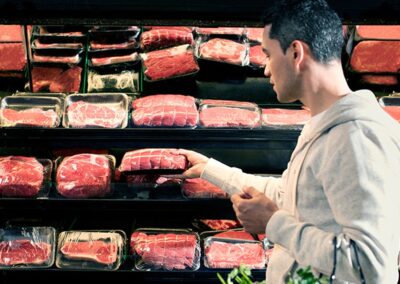Using a produce absorbent pad in cut fruit and vegetable containers at retail has become increasingly popular over the years. The benefits of using an absorbent pad in plastic clamshells can aid retailers in extending shelf life and improving the quality of fruit and vegetables.
Implementing a pad into existing operational processes is easy. An absorbent pad is placed in the bottom of a container to absorb excess moisture from cut fruits and vegetables. This moisture can cause the produce to spoil faster, leading to a decrease in shelf life and potentially a loss of revenue for the retailer.
Here are the benefits of using an absorbent pad in cut fruit and vegetable containers:
- Longer shelf life: By absorbing excess moisture, the pad helps to extend the shelf life of the cut fruits and vegetables and ensure stores are selling quality cut produce. This means that retailers can keep their produce on the shelves for longer periods of time, reducing waste and maximizing profits.
- Improved appearance: Moisture can cause cut fruits and vegetables to become soft and unappetizing, which can turn off customers. By using an produce absorbent pad, the produce maintains its freshness, making it more visually appealing to shoppers.
- Enhanced food safety: Moisture can create a breeding ground for bacteria, which can lead to foodborne illness. The risk of bacterial growth is reduced, helping to ensure that the produce is safe for consumption.
- Improved customer experience: Ultimately, using a pad can enhance the overall customer experience. By maintaining the quality and freshness of the produce, customers are more likely to purchase the quality produce and return to the produce department for future purchases.
How do you determine the quality of produce?
There are several methods for determining the quality of produce, including:
- Physical and Chemical Components: Quality of fruits and vegetables can be determined objectively by measuring the physical and/or chemical components related to the attribute. Texture/firmness, taste, flavor, smell, and nutritional quality can be estimated by destructive methods and some can be estimated by nondestructive methods[1][2].
- Sensory Evaluation: A sensory evaluation of a food product is an essential part of determining food quality. Sensory properties that are assessed include taste, aroma, texture, appearance, and color. These characteristics are perceived by the senses and work in concert with one another, creating a general impression of a food product[3].
- Chemical Composition: The chemical composition of a food product can help determine its nutrient value. When inspecting a product, the food’s moisture content and fat content are analyzed. The substances used to create the product as well as the amounts will also be considered[3].
- Visual Appearance: The visual appearance of fresh fruits and vegetables is one of the first quality determinants made by the buyer, whether the wholesaler, retailer, or consumer[4].
- Size, Consistency, and Shape: Consumers often measure the quality of food based on size, consistency, and shape[5].
Overall, determining the quality of produce involves assessing various factors such as physical and chemical components, sensory evaluation, chemical composition, visual appearance, and size, consistency, and shape.
Using an absorbent pad in cut fruit and vegetable containers is a smart choice for retailers. With these benefits in mind, it’s clear why more and more retailers are choosing to use absorbent pads in their produce departments.
Download our sales brochure here.
Citations:
[1] https://www.ishs.org/ishs-article/379_70
[2] https://www.actahort.org/books/379/379_70.htm
[3] https://www.cenzasmart.com/cenza/food-beverage-training/blog.aspx?ID=1100&Title=6+Ways+to+Determine+Food+Quality
[4] https://ucanr.edu/datastoreFiles/608-295.pdf
[5] https://theforbesfamilyfarm.com/quality-definitions-for-produce/


